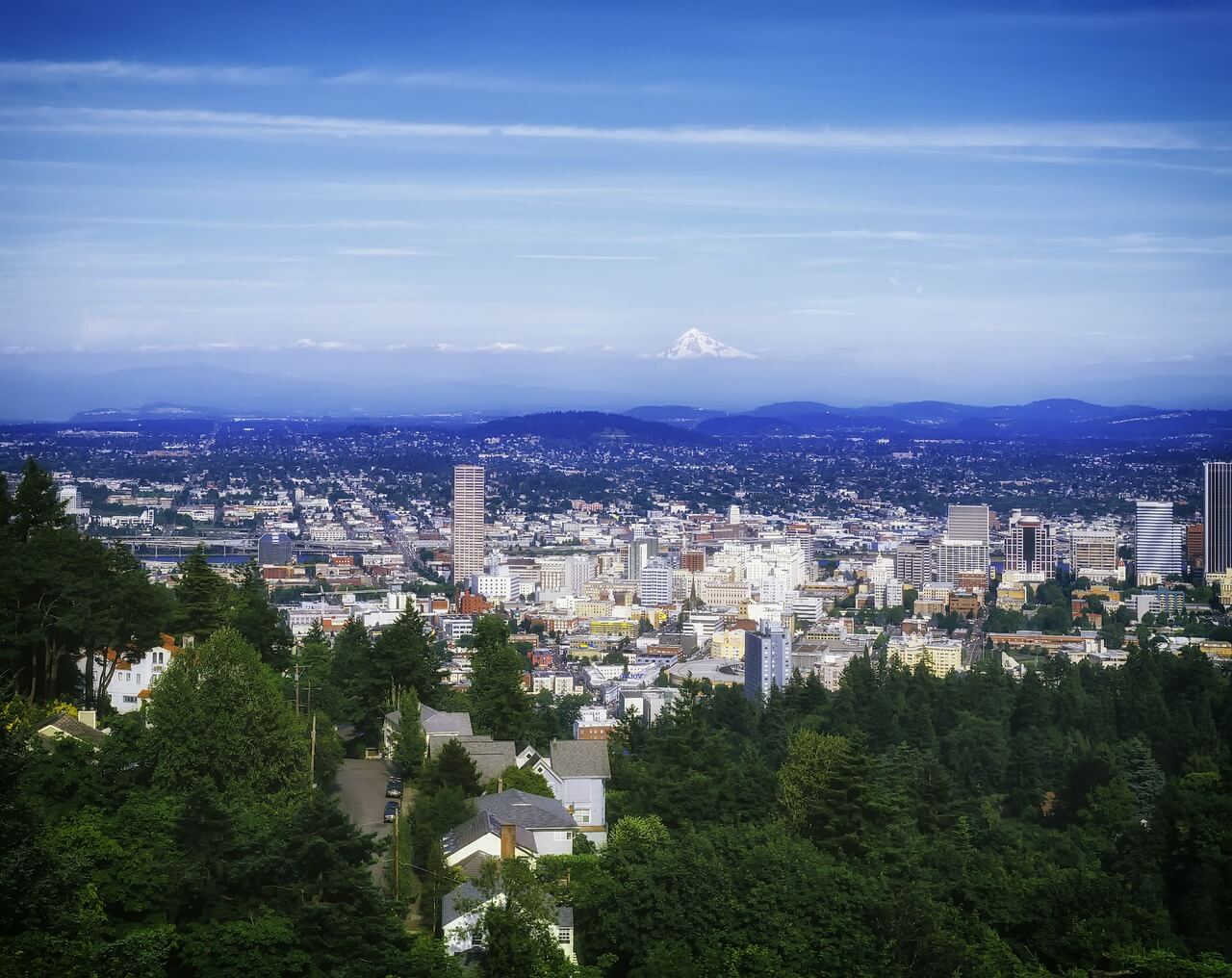
If you were to choose from Miami, Portland, Las Vegas, New York, and Denver, which city would you say is the best example of smart growth?
The correct answer is Portland, Oregon. It is popularly known as one of the few cities in the U.S. that totally disregarded the rule book outlining the conventional city growth patterns. Compared to other cities in the U.S., it is considerably more compact, bike-able, and walkable. Consequently it has become one of the most suitable examples of smart growth in the country.
Some of that can be attributed to a not-so-pleasant land use policy that was introduced in the 1970s. It basically encircled the city to eradicate sprawl, and to drive development back in the direction of the downtown area. The policy, however, has said to be divisive. In fact, it has been claimed to be a key contributor to Portland’s current affordability crisis. It is important to determine how this came about, and the resulting effects.
The Origins of Portland’s Urban Growth Boundary
This sort of a boundary does not only exist in Portland, Oregon. All other cities in Oregon have incorporated a similar thing. Also, various other cities have copied he same strategy — similar legislations have been witnessed in Tennessee and Washington.
The origins of the policy in the state of Oregon date back to the 1970s. It began with Gov. Tom McCall’s introduction of land use restrictions aimed at protecting the farmland neighboring Oregon’s cities by strict restriction of construction, while encouraging the utilization of more central land.
Although this might sound like an unlikely strategy, given the country’s anti-regulatory political climate, sub-regional plans in cities such as Portland bear some significant force. The policy takes a positive spatial planning approach; one that does not necessarily focus on restrictions, but aims to drive development inwards and encourage it to build up in more central regions of the city. This aids with the provision of critical mass of people in the said areas, hence justification of the provision of public transit and a boost to active travel and walkability.
This is one of the various plans that have distinguished Portland from other cities in the country — the rise of green infrastructure, people-friendliness, bike-friendliness, and light rail. It is managed via a system that collaborates with private developers to negotiate over densities and launch projects in Urban Renewal Areas.
Well, this makes a lot of sense, right? So what is the basis of all the opposition?
The Affordability Crisis
One of the major criticisms with these boundaries is that there is often a limit to how much a city can densify before problems begin to arise.
Usually, the scarcity of buildable land tends to increase the cost of housing. The move to construct affordable units in the city over the past few years has tried to curb these price hikes, though they still continue to rise.
This brings to the fore the “green noose” argument that opposes land-use boundaries. Nonetheless, some people still don’t consider the policy a problem. According to them, the rises are a natural outcome of the location’s increasing desirability.
The Leapfrog Development Problem
One of the key problems caused by urban sprawl and ribbon development is the issue of sustainability. It is normally problematic to serve low-density suburbs by public transport because they can’t achieve the required critical mass.
In a case where the urban growth boundary is outgrown — mainly as a result of not being kept up-to-date —, leapfrog development is likely to occur. This refers to the situation where development leaps beyond the no-build areas to get to the extremely unsustainable locations with very lengthy commutes toward the center.
The Value of Impermanence
As opposed to the U.K.‘s initial version of the policy — known as the “green belt”, which was introduced in the 1930s and claimed to be the inspiration behind the UGB —, the city’s growth boundary does not have a legal definition as per its permanence. This allows for regular adjustment to make sure Portland has enough developable land to sustain a growing population.
There is usually an Urban Growth Report every six years that forecasts employment and population growth and alters the boundary to conform to the forecast. As such, the boundary has expanded regularly since its establishment. This ensures the UGB addresses present-day challenges, rather than turning into a nostalgic fetish.
The expansions themselves are, however, sometimes controversial. In December of 2018, the state of Oregon’s metropolitan authority gave permission for four new expansions, translating to 2, 200 acres of development. This was the largest expansion since 2002 and the first since 2014, indicating the growth pressures on Portland. The next assessment is scheduled for 2024.
Conclusion
Availing land to build on is usually vital to accommodating a growing population; however, for that growth to be sustainable, it has to take place in the right places. It is also an undertaking filled with opposition and emotion. Moreover, there is need to overcome the prevalent cultural barriers. Despite the rebuke urbanists and architects have for them, Americans still love them.
Currently, a key problem in Portland is that only the wealthy can afford to have a backyard — whereas Europeans utilize public open space and raise their children in apartments, the American dream is associated with having your own front door.
The impressive example that has been set by the city of Portland — a city that aims to offer density with green space and a high quality of life— is a crucial one. Nevertheless, if the city wishes to soar beyond its satirical “Portlandia” portrait, careful management will have to be employed in catering for the unprivileged members of society and maintaining diversity. If all this is taken into account, then it would be difficult for the city of Portland to cease to be one of the best examples of smart growth in the U.S. Much progress needs to be witnessed to serve as a testament to the other cities that wish to enjoy similar privileges.

Stephen is a versatile and enthusiastic content writer with a passion for writing. He has over 8 years of experience in the field of writing. He strives to transform businesses and lives through his writing, and enjoys every minute of it.













